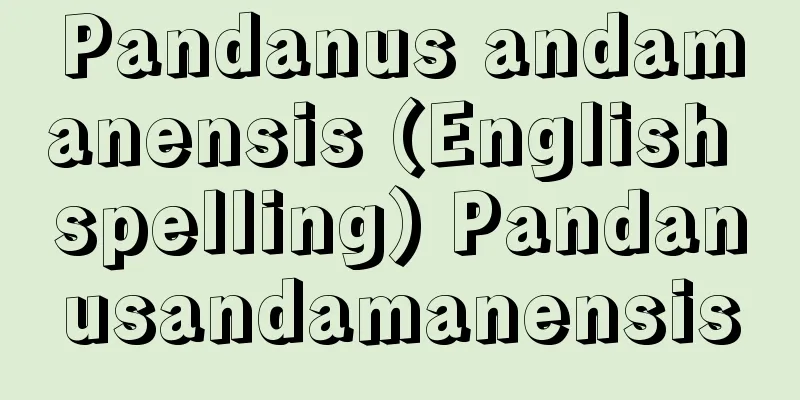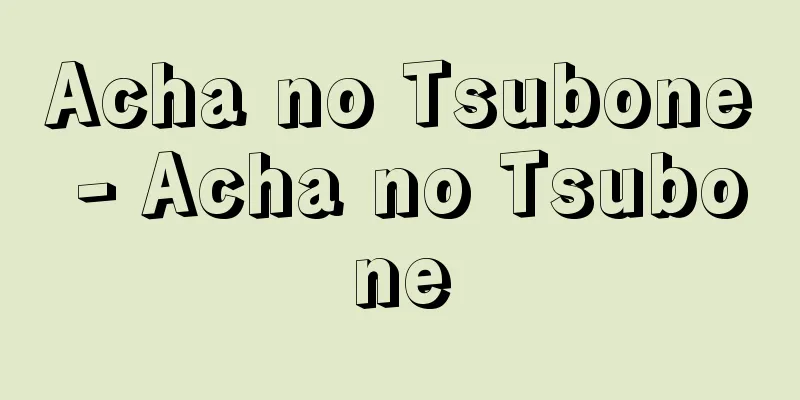Tenryo - Tenryo

|
A colloquial name for territories directly controlled by the Edo Shogunate. Tenryo originally referred to territories directly controlled by the Imperial Court (Emperor), but since most of the former Shogunate territories were considered to have become prefectures directly controlled by the Meiji government, or territories directly controlled by the Emperor, the term Tenryo retroactively came to refer to territories directly controlled by the Shogunate. Officially, they were called Goryo (Goryo), Goryosho, Koryo, and Kogi Goryosho. Tenryo was expanded after the Tokugawa clan's treasury land (kurairichi) was established after the Battle of Sekigahara in 1603 (Keicho 8), reaching approximately 2.3 million koku by the end of the Keicho era, and approximately 4 million koku during the Genroku era (1688-1704), and was distributed in 47 of the 68 provinces in Japan. Tenryo were used for the purpose of the transfer, confiscation, and establishment of feudal lords and hatamoto, so the total amount of rice yield was not fixed. However, in 1744 (Enkyo 1), the total amount of rice yield was 4.63 million koku, and the annual tax amount was 1.8 million koku, and thereafter the total amount was on a downward trend. They were mainly distributed in the Kanto, Tokai, and Kinai areas, but were mostly distributed in the northern and Oshu regions, especially in key locations for politics, finance, transportation, and military purposes, and were concentrated in the production areas of rice and commercial crops, which were the basis of annual tax, as well as in cities, ports, mines, and forest areas. In 1730 (Kyoho 15), tenryo were divided into areas controlled by gundai and daikan with 3.6 million koku, daimyo depositories with 740,000 koku, and distant province magistrates with 130,000 koku. The rice, gold and silver taxes from each tenryo were collected in Edo or Osaka and placed under the jurisdiction of the Kanjosho (Accounting Office), forming an important foundation for the shogunate's finances. [Nao Murakami] "Tenryo" by Nao Murakami (1965, Jinbutsu Oraisha) " "On the Regional Distribution of the Directly Controlled Territories of the Edo Shogunate" (Hosei Shigaku, Vol. 25, 1973, Hosei University)" "On the Regional Distribution of the Directly Controlled Territories of the Shogunate in the Late Early Modern Period" (Hosei Shigaku, Vol. 34, 1982, Hosei University) [Reference] | |Source: Shogakukan Encyclopedia Nipponica About Encyclopedia Nipponica Information | Legend |
|
江戸幕府の直轄領の俗称。天領とは本来、朝廷(天皇)の直轄領のことを称したが、明治維新の際、旧幕府領の大半が明治政府の直轄県つまり天皇の直轄領になったともみられたことから、さかのぼって幕府直轄領を天領とよぶようになった。正式には御料(御領)、御料所、公領、公儀御料所と称した。天領は、徳川氏の蔵入地(くらいりち)が関ヶ原の戦いを経て1603年(慶長8)の幕府開設後に拡大され、慶長(けいちょう)末年には約230万石に達し、元禄(げんろく)年間(1688~1704)には約400万石となり、全国68か国のうち47か国内に分布した。 天領は、大名・旗本の改易や転封・知行替(ちぎょうが)え、創設のためあてられたので、総石高(こくだか)は固定化されていなかったが、1744年(延享1)の総石高463万石、年貢高180万石を最高に、以後減少の傾向がみられた。分布状況は関東・東海・畿内(きない)を中心に北国・奥羽に多く、とくに政治・財政・交通・軍事上の要地に設けられ、年貢の基幹をなした米や商品作物の生産地域、都市・港湾や鉱山・山林地帯に重点的に分布していた。1730年(享保15)には、天領のうち郡代・代官支配地360万石、大名預所(あずかりしょ)74万石、遠国奉行(おんごくぶぎょう)支配地13万石に分けられていた。各天領の年貢米や金銀は江戸・大坂に集められ、勘定所(かんじょうしょ)の管轄下に置かれ、幕府財政の重要な基盤になった。 [村上 直] 『村上直著『天領』(1965・人物往来社)』▽『同「江戸幕府直轄領の地域的分布について」(『法政史学』25所収・1973・法政大学)』▽『同「近世後期、幕府直轄領の地域的分布について」(『法政史学』34所収・1982・法政大学)』 [参照項目] | |出典 小学館 日本大百科全書(ニッポニカ)日本大百科全書(ニッポニカ)について 情報 | 凡例 |
Recommend
Koyo Kawamura
1897-1946 A composer from the Showa period. Born ...
apolysis
… The process of molting is essentially the same ...
Wharf - Futou (English spelling)
A wharf is an area where various facilities are c...
Dog Memorial Service - Inukuyou
This is a women's event held in Chiba and Ibar...
Geiger, A.
...His successors found ideological agreement wit...
Monosuccharide
…Most of them have the molecular formula (CH 2 O)...
bills only policy
…U.S. Treasury bills are issued periodically, wit...
Chichijima Islands
An archipelago that forms part of the Ogasawara Is...
Episyrphus balteatus
An insect of the Diptera order, Syrphidae family (...
《Gizankoukaku》
...In the Edo period, a new trend arose of tellin...
shrinkage cavity
…The main casting defects are described below. (1...
Hexacorallia
…All of them are marine, and most of them are att...
Umru' al-Qays (English spelling)
...From about the 8th century, the ancient poetry...
Lobelia sessilifola; lobelia
A perennial plant of the Campanulaceae family, it ...
Unimolecular Nucleophilic Substitution - Ibunshikyuukakuchikan
...Optical active substances are also racemized. ...









![Fujikawa [town] - Fujikawa](/upload/images/67ccb24615289.webp)